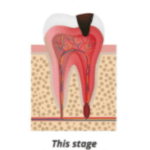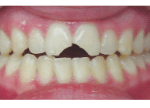Root canal treatment in Liverpool
Are you tired of letting tooth discomfort hold back your vibrant smile? Say goodbye to persistent pain and hello to a renewed sense of well-being with our cutting-edge root canal treatment clinic in the heart of Liverpool.
Our highly skilled and compassionate dentists bring years of experience and training to every procedure. With a passion for restoring oral health, we specialize in delivering pain-free root canal treatments that prioritize your comfort and peace of mind.
Step into a soothing environment designed to make you feel at ease. From cozy waiting areas to advanced treatment rooms equipped with the latest technology, we’ve crafted an atmosphere where relaxation and exceptional care converge.
Request a consultation
What is a root canal treatment ?
A root canal treatment, also known as endodontic therapy, is a dental procedure designed to treat and save a tooth that is severely decayed, infected, or damaged. The procedure involves removing the pulp tissue, which is the soft inner part of the tooth containing nerves, blood vessels, and connective tissue, from the root canals. The canals are then cleaned, disinfected, shaped, and filled with a special material to seal them, preventing further infection or decay.
When is root canal treatment performed ?
Endodontic treatment is necessary when the pulp is infected. The main causes of this problem are:

1. Untreated Carries
Carries that are not detected can lead to complications such as sensitivity to cold or hot stimuli that are not subsiding unless the patient takes painkillers and can affect the patient’s daily routine by disturbing the night’s sleep. Easy Dental encourages our patients to return for regular checkups every 6 months so we can prevent these unfortunate events from happening through a thorough
examination and radiological control.

2. Tooth abscesses or cysts
If the carries are left untreated can lead to pulp necrosis (the nerve of the tooth dies) and abscess forming at the tip of the root. This stage can be extremely painful and can have episodes of swelling on the side of the face where the infected tooth is located.

3. Teeth injuries
Traumatic dental injuries can occur in people of all ages and activity levels. The cause might be a car accident, a fall down the stairs, or an elbow to the face during a basketball game. As with most types of dental treatment, the primary goal when treating a traumatic dental injury is to save teeth at risk of being lost and restore them to full function and normal appearance. In many cases, the difference between saving and losing a tooth depends on taking the proper action in the immediate aftermath of an injury.
Root Canal Treatment Process Overview
Root canal treatment has a high success rate and is a way to save a tooth that might otherwise need to be extracted. It alleviates pain, removes infection, and restores the tooth’s function and appearance. It’s important to address any dental pain or discomfort promptly, as delaying treatment can lead to more severe issues and complications. If you suspect you might need a root canal, it’s best to consult a dentist for a proper evaluation and recommendation.
The dentist or endodontist examines the tooth and takes X-rays to determine the extent of the infection or damage. Common symptoms that might indicate the need for a root canal include severe toothache, sensitivity to hot or cold temperatures, swelling, or a pimple-like bump on the gums.
Local anesthesia is administered to numb the tooth and the surrounding area, ensuring that the patient is comfortable throughout the procedure.
The dentist creates a small opening in the crown (top) of the tooth to access the pulp chamber and root canals.
The infected or damaged pulp tissue is carefully removed from the pulp chamber and the root canals using specialized instruments.
The dentist uses tiny instruments to clean and shape the canals, removing any remaining debris, bacteria, and infected tissue. This step helps ensure the canals are thoroughly disinfected.
Once the canals are clean and shaped, they are filled with a biocompatible material called gutta-percha. This material seals the canals, preventing bacteria from re-entering.
After the root canal is completed, the access opening created in the crown is sealed with a temporary or permanent filling. In some cases, a dental crown might be recommended to strengthen the tooth, especially if a significant portion of the tooth’s structure has been lost due to decay or damage.
A follow-up appointment is usually scheduled to monitor the healing process and ensure that the tooth has properly healed.
Root Canal Treatment - Dr Bogdan Banica
5 * Root Canal Treatments in Liverpool
